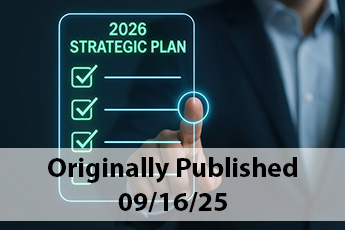Do you happen to know which big reptile got its name from the Spanish meaning, “the lizard”? If you guessed the alligator, you are right. This is a good example of how things evolve and look different over time. Many people realize that things won’t look the same post-pandemic including financial institution-fintech partnerships. There are two key drivers which may explain not only how this partnership is changing, but also how you may want to approach it post-pandemic. Digital banking explosion. Digital banking is not going to retract after the pandemic. In fact, 73% of US adults believe that fintech solutions are part of the “new normal”, according to a Plaid/Harris Poll. Plus, 67% will continue using these digital solutions, as they now have a year’s worth of familiarity and flexibility with digital banking. Customer experiences have moved up a few notches too, so expectations remain high. A current Javelin Strategy & Research report notes, “From this point on, success increasingly will be measured by how wisely financial institutions pick and promote features that deepen digital entanglement.” For many CFIs, this will likely include a fintech partnership. PPP. Many fintechs were reliant on community financial institutions (CFIs) to gain access to the small business lending program, so they looked for collaboration opportunities. CFIs also looked to fintechs to help quickly validate the identities of new customers and process the applications efficiently through the SBA platform. We found one CFI in NJ that partnered with more than 30 fintechs to process PPP loans for billions of dollars, while another CFI in CA was contacted by six fintechs during the pandemic for PPP. Some of these partnerships have prevailed and others likely haven’t. Still, some CFIs are finding reasons to work with fintechs.What fintechs look for. Most CFIs are used to being responsive to partners since they have short chains of command. Fintechs like that quality as they are expected to be fast in their responses to their customers. Without the big brand-building budget of bigger institutions, more capital is available for partnerships and product advancements. Many CFIs look for innovation and want to better understand new digital solutions to retain and grow their customer base. Fintechs appreciate this willingness to better serve their customers with technology.Steps for a successful post-pandemic partnership.
- Discuss the strategic technology roadmap early in the process so that each partner knows where it adds value and performs accordingly.
- Once you have a strategy defined, ensure that your goals are aligned so that one partner does not have a greater benefit than the other.
- Communicate regularly to ensure that you understand the new available technologies, as well as upgrading the current technologies.
- Maintain good vendor management to stay aware of any potential issues that could lead to increased risk or liabilities down the road. This means reviewing the customer journey, including communications and declinations to ensure that your compliance obligations are understood and supported.
While fintechs may have cutting-edge technologies and sometimes feel too advanced for neighborhood bankers, there are several good reasons to consider fintech partnerships. Just make sure you solidly vet each company since some are newer and don’t have the same history of compliance and long-term success. The recent DOJ investigation of fintechs’ activities during PPP is a clear sign that much due diligence is needed. Once that is done, use the same negotiation and management that you would for any third-party relationship. We know you will make the right decision.




